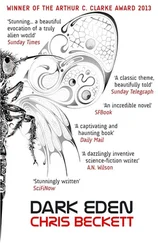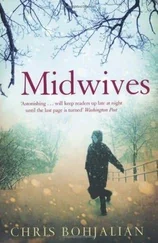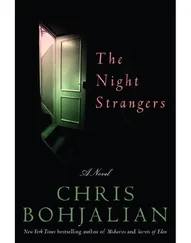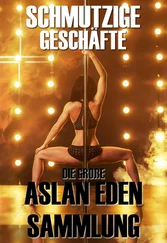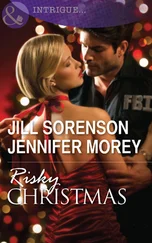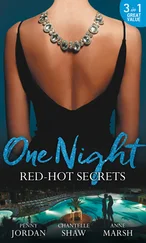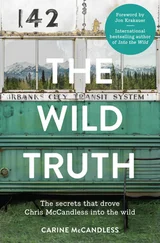In the days after Alice’s death, many adult members of the church took great comfort in Alice’s involvement with the group. I was told often by parishioners in the four days before I left that if Alice had not been a part of the Circle, the Haywards’ bodies would probably have been found by their daughter the next morning or afternoon, when she returned from Tina Cousino’s house. Instead it was Ginny O’Brien who would alert the world that the couple was dead. That day Joanie Gaylord was hosting the group, and when Alice had failed to arrive by seven-thirty, Ginny called her friend. There was, of course, no answer at the Haywards’. And so when the meeting adjourned around nine-thirty, she decided to drop by her friend’s house. She would tell me that afternoon that she’d had a bad feeling as she drove up the driveway to the usually immaculate yellow Cape and seen Lula the dog asleep on the porch. She had, in fact, known what had occurred before she even opened the unlocked front door.
She knew, she said, because the living room was right beside the entry hall, and so from the front steps of the house she had seen the flesh and bone and brain that had once been a part of George Hayward on the inside mesh of the screen window.
There is no explanation for my decision to enter the clergy that is both quick and honest. They tend to be one or the other. The quick answer-and it is a response I’ve given most often to especially avid or fundamental believers (of which there is no dearth, even among Baptists in northern New England)-is this, an anecdote I was told by one of my more erudite professors at seminary. When he was a young graduate being considered for a poor, rural parish in West Virginia, he gave a sermon at the church there one Sunday morning. It was, even in his own opinion, more intellectual than inspired, more long-winded than wise. It wasn’t very good. After the service an old deacon-a coal miner who had somehow made it into his seventies without succumbing to any of the grotesque lung diseases that usually mark the end of a coal miner’s life-approached him and asked with a voice rich in irony, “Was you sent or did you just went?” My professor understood instantly what the deacon was suggesting: He, the young pastor, seemed to lack passion and conviction. He seemed merely to be going through the motions. And so when people would ask me why I’d become a minister and I could tell from the question that they wanted an answer singed with Pentecostal fires, I’d recount this story, always ending with a self-deprecating shrug and the remark, “All I can tell you is I believe I was sent.”
The honest answer is more complex. On some level I was sent. Or inspired. Or called. But my calling, such as it was, wasn’t a single booming invitation from above (really, is it ever?), or even one palpable experience of the living Christ in the here and now. When I was ten and eleven, I had a fairly common boy’s interest in the horrific and the frightening, in whatever it was that caused one’s heart to beat a little faster: chain-saw murderers, serial killers, and those nightmare ghouls who lurk under our beds. Nasty stuff, but pretty typical. And then, of course, there was the predictable array of werewolves, vampires, mummies, aliens, killer robots, psychotic cyborgs, and the assorted undead zombies and freaks that television shows and movies churned out for my entertainment and dreams (or, to be precise, for my disturbing, sheet-gripping nightmares). My friends in Bronxville and I would savor monster movies whenever they arrived for the summer at the theater across the street from the railroad station, and alone or together we would follow their computer-generated mayhem on what are now quaint and primitive video games. My fascination with this sort of carnage and violence was neither unusual nor a sign of a potentially dangerous personality disorder. Given the always precarious state of my parents’ marriage, I wouldn’t describe my childhood as flawless or serene. (Some years later, when I announced my decision to go to divinity school, my sister observed that I was moving from a bickerage to a vicarage.) But neither was my childhood inordinately painful or scarring. I played Little League baseball in the spring and Pop Warner football in the fall. In the winter I played ice hockey and skied. My father was head of personnel for a large investment bank and commuted with a great many of my friends’ parents into lower Manhattan, gathering like pigeons every morning at that train station by the movie theater. My mother was an editor at a travel magazine but left the publication in her early thirties to stay home and raise my sister and me. My father was ten years older than she was. Their marriage was certainly not exempt from the strangeness that marked the 1970s, but its strains had more to do with the idiosyncratic characters of my parents than with the nature of their friends. As far as I know, no one was swapping spouses at pool parties in July and August. And though I occasionally smelled marijuana, the drug of choice in that circle was clearly brown liquor: The adults encouraged one another to drink scotch the way they insisted their children drink milk.
As a teenager I listened to a lot of heavy-metal and punk music, and I papered my bedroom walls with posters of athletes and rock stars. I had girlfriends, but, in a pattern that would continue through college and into my adult life, I withdrew as soon as it became evident that the relationship was reaching what airline pilots call the V1 point, that point of decision: Either we lifted off and became a very serious couple or we aborted the takeoff and went our separate ways. Invariably I chose to slow the engines if my girlfriend showed no sign of decelerating first.
At some point in high school, when my history class was focused on the Roman Empire, my interest in all things Grand Guignol and sensational found a new fixation: the Crucifixion. My father had been raised a Baptist in southern Vermont-one of the reasons, I imagine, that I wound up here-and my mother was a Presbyterian from a nearby suburb in Westchester. I had gone to Sunday school at the local Baptist church along with my older sister until I was seven, but by the time I was in second grade, we stopped attending church with any regularity. My parents had been worn down by their bickering, their constant late nights on Fridays and Saturdays, my father’s job, and the simple demands of raising their two children. We became Easter and Christmas Christians, making it to church roughly twice a year, and my spiritual quest as a Christian was stalled somewhere between second grade and my adolescent desire to sleep till noon most Sunday mornings.
The Crucifixion changed that. The whole idea that an empire as seemingly civilized as Rome’s-in the movies that formed my conception of the ancient world, the Romans were always extremely mannered and would have passed easily in Bronxville or Pelham-saw crucifixion as a reasonable and relatively common form of justice mesmerized me. I was appalled, but I was also fascinated. We’ll never know exactly how many men were crucified when the revolt of Spartacus the slave was finally suppressed, but one account suggests that six thousand crosses lined the road between Capua and Rome. Of course, it wasn’t the sheer numbers that made crucifixion at once abominable and hypnotic, it was the grotesque particulars of the execution. Nails as thick as Magic Markers and about five inches in length pounded through the bones in the palms of one’s hands or-after the Romans had perfected their technique-through the bones in the wrists. Another, even longer nail, a shade under seven inches in the case of the crucified skeleton excavated at Giv’at ha-Mivtar-was banged through the heels of both feet. Or the ankles. Or the metatarsals traversing the arch. (Wander for even half an hour through the Uffizi in Florence: For nearly a millennium, the great artists in Europe were drawn to those nails.) Bodies would hang on a cross in the Mediterranean heat for hours or-not infrequently-two and three days, the criminal or the prisoner wide awake, in unspeakable agony.
Читать дальше

